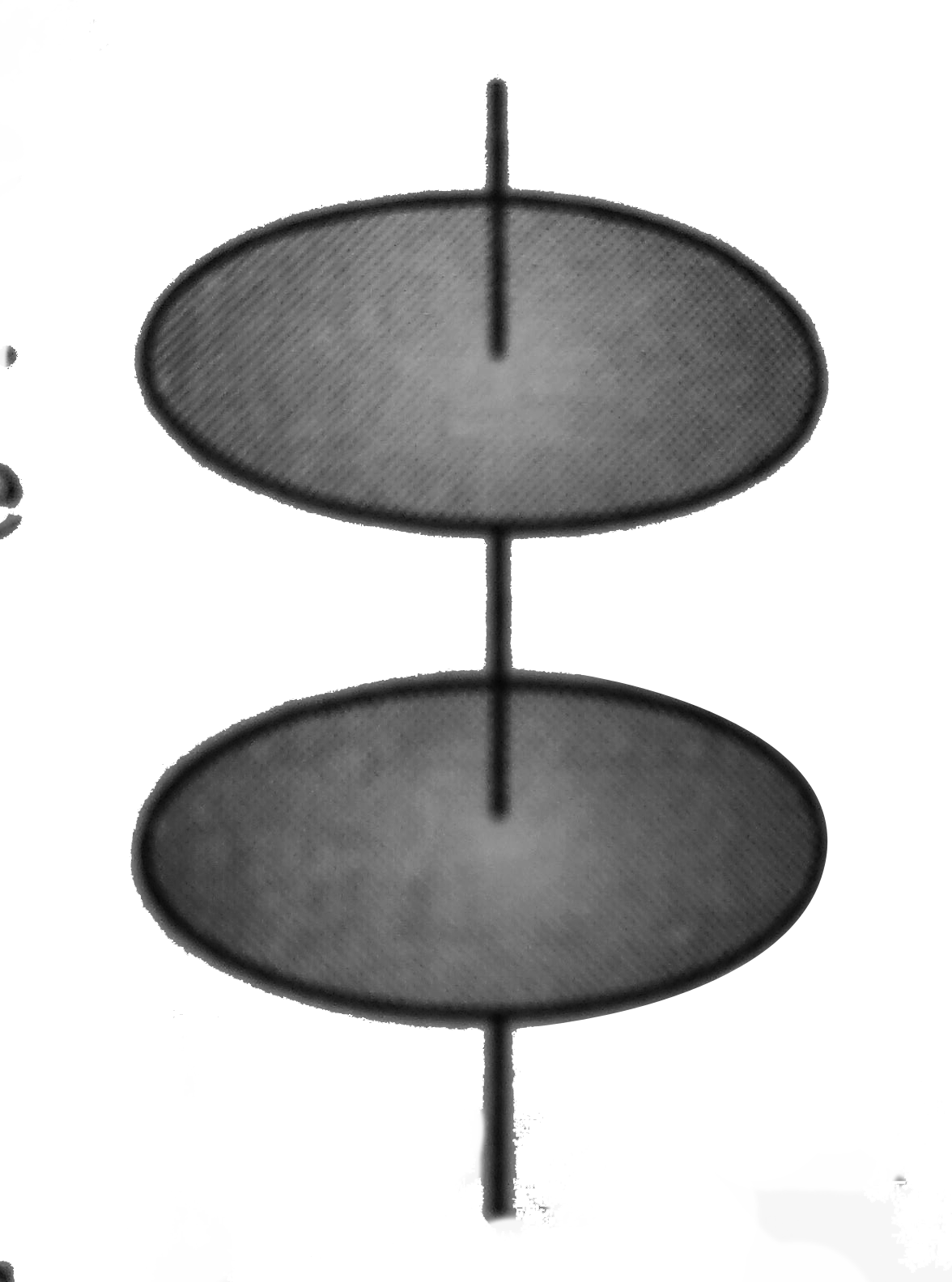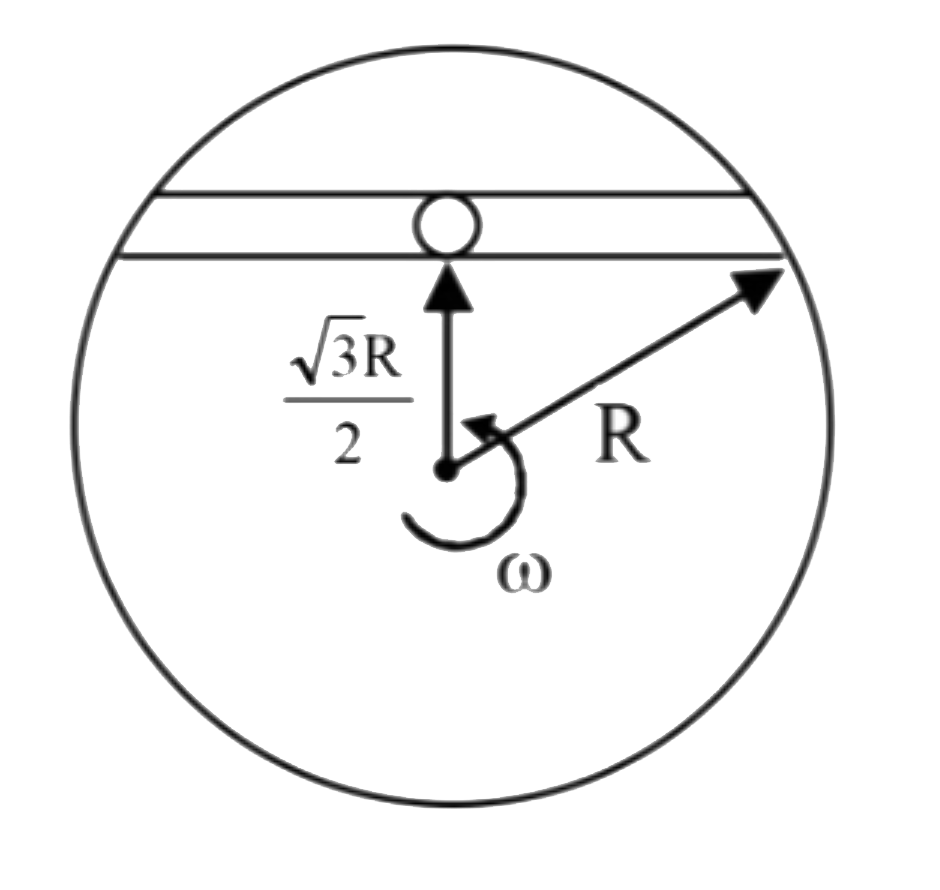A horizonral circular plate is rotating about a vertical axis passing through its centre with an angular velocity ω0. A man sitting at the centre having two blocks in his hands stretches out his hands so that the moment of inertia of the system doubles. If the kinetic energy of the system is K intially, its final kinetic energy will be
a, 2K
b. K/2
c, K
d, K/4
The correct Answer is:B
To solve the problem, we need to analyze the situation using the principles of rotational dynamics, specifically focusing on the conservation of angular momentum and the relationship between kinetic energy and moment of inertia.
1. Understanding Initial Conditions:
- Let the initial moment of inertia of the system be I.
- The initial angular velocity is ω0.
- The initial kinetic energy K is given by the formula:
K=12Iω20
2. Final Conditions:
- When the man stretches out his hands, the moment of inertia doubles, so the final moment of inertia I′ is:
I′=2I
3. Conservation of Angular Momentum:
- Angular momentum L is conserved in the absence of external torques. Therefore:
L=Iω0=I′ω′
- Substituting I′ into the equation:
Iω0=2Iω′
- We can simplify this to find the final angular velocity ω′:
ω′=ω02
4. Calculating Final Kinetic Energy:
- The final kinetic energy K′ can be calculated using the new moment of inertia and the new angular velocity:
K′=12I′ω′2
- Substituting I′=2I and ω′=ω02:
K′=12(2I)(ω02)2
- Simplifying this expression:
K′=12(2I)(ω204)=Iω204
- Since K=12Iω20, we can express K′ in terms of K:
K′=K2
Final Result:
The final kinetic energy K′ of the system after the man stretches out his hands is:
K′=K2
- Let the initial moment of inertia of the system be I.
- The initial angular velocity is ω0.
- The initial kinetic energy K is given by the formula:
K=12Iω20
- When the man stretches out his hands, the moment of inertia doubles, so the final moment of inertia I′ is:
I′=2I
- Angular momentum L is conserved in the absence of external torques. Therefore:
L=Iω0=I′ω′
- Substituting I′ into the equation:
Iω0=2Iω′
- We can simplify this to find the final angular velocity ω′:
ω′=ω02
- The final kinetic energy K′ can be calculated using the new moment of inertia and the new angular velocity:
K′=12I′ω′2
- Substituting I′=2I and ω′=ω02:
K′=12(2I)(ω02)2
- Simplifying this expression:
K′=12(2I)(ω204)=Iω204
- Since K=12Iω20, we can express K′ in terms of K:
K′=K2
The final kinetic energy K′ of the system after the man stretches out his hands is:
K′=K2
Topper's Solved these Questions
- BOOK - CENGAGE PHYSICS ENGLISHCHAPTER - RIGID BODY DYNAMICS 2EXERCISE - MCQ_TYPE14videos
RIGID BODY DYNAMICS 2
- BOOK - CENGAGE PHYSICS ENGLISHCHAPTER - RIGID BODY DYNAMICS 2EXERCISE - AR_TYPE2videos
RIGID BODY DYNAMICS 2
- BOOK - CENGAGE PHYSICS ENGLISHCHAPTER - RIGID BODY DYNAMICS 2EXERCISE - True/False4videos
RIGID BODY DYNAMICS 2
- BOOK - CENGAGE PHYSICS ENGLISHCHAPTER - RIGID BODY DYNAMICS 1EXERCISE - Integer11videos
RIGID BODY DYNAMICS 1
- BOOK - CENGAGE PHYSICS ENGLISHCHAPTER - SOUND WAVES AND DOPPLER EFFECTEXERCISE - Integer16videos
SOUND WAVES AND DOPPLER EFFECT
Similar Questions
A solid sphere of radius r and mass m rotates about an axis passing through its centre with angular velocity ω. Its K.E. Is
View SolutionA horizontal disc is rotating about a vertical axis passing through its centre. If an insect moves from centre to rim then the angular momentum of the system
View Solution
Knowledge Check
- Question 1 - Select One
A child is standing with folded hands at the center of a platform rotating about its central axis. The kinetic energy of the system is K. The child now stretches his arms so that the moment of inertia of the system doubles. The kinetic energy of the system now is: a) K/4 b) K/2 c) 2K d) 4K
AK/4BK/2C2 KD4 K
A uniform disk of mass 300kg is rotating freely about a vertical axis through its centre with constant angular velocity ω. A boy of mass 30kg starts from the centre and moves along a radius to the edge of the disk. The angular velocity of the disk now is
View SolutionA ring of mass m and radius r rotates about an axis passing through its centre and perpendicular to its plane with angular velocity ω. Its kinetic energy is
View SolutionA uniform disc of mass m and radius R rotates about a fixed vertical axis passing through its centre with angular velocity ω. A particle of same mass m and having velocity of 2ωR towards centre of the disc collides with the disc moving horizontally and sticks to its rim. Then
View SolutionA uniform horizontal circular platform of mass 200kg is rotating at 5 rpm about vertical axis passing through its centre. A boy of mass 80kg is standing at its edge. if boy moves to centre of platform, find out final angular speed
View SolutionTwo identical discs are positioned on a vertical axis as shown in the figure. The bottom disc is rotating at angular velocity ω0 and has rotational kinetic energy K0.The top disc is initially at rest. It then falls and sticks to the bottom disc. The change in the rotational kinetic energy of the system is
 View Solution
View SolutionA horizontal disk is rotating with angular velocity ω about a vertical axis passing through its centre. A ball is placed at the centre of groove and pushed slightly. The velocity of the ball when it comes out of the groove -
 View Solution
View SolutionA body is rotating with angular momentum L. If I is its moment of inertia about the axis of rotation is I, its kinetic energy of rotation is
View Solution

